If you grow herbs at home, whether it’s an indoor kitchen herb garden or planted outside, chances are you may well have an abundant supply of fresh herbs that you just can’t use up in time.
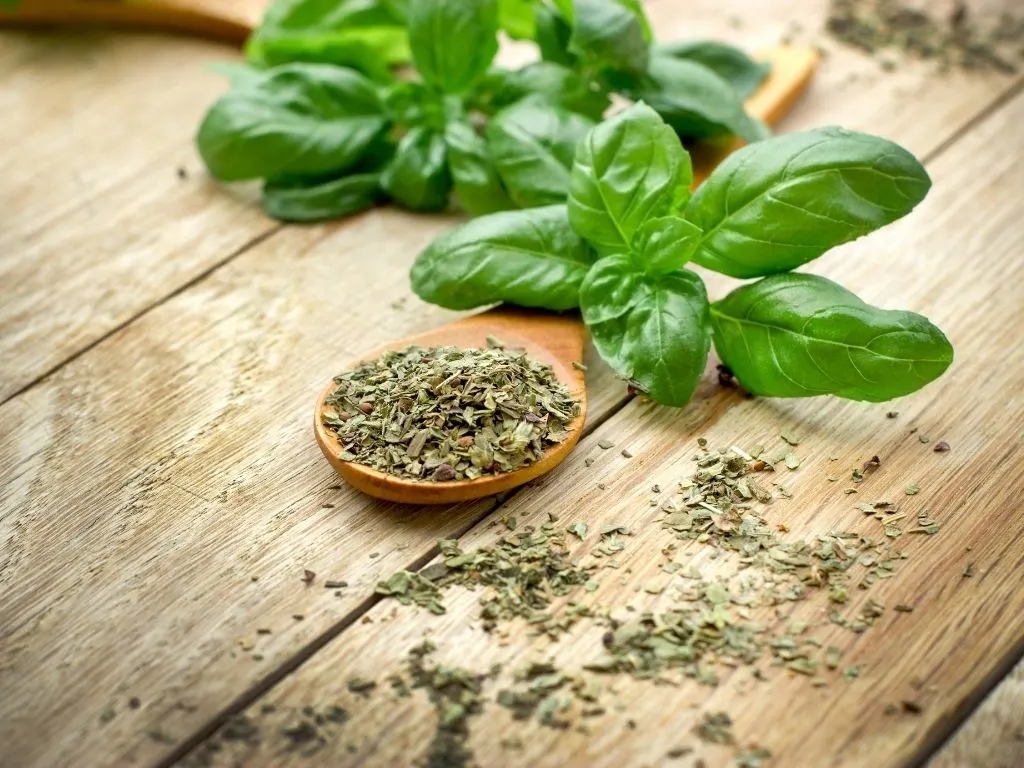
Yes, you can freeze fresh herbs – but by drying them instead, you can further increase their lifespan and create a different taste dimension when seasoning dishes.
In this guide, we will cover the key points of how to dry herbs using various methods, including a food dehydrator, oven drying, in a microwave and hanging them out to dry.
- Drying Herbs – A Step By Step Guide
- When Should You Pick Herbs For Drying?
- Preparing Fresh Herbs For Drying
- How To Tell When Herbs Are Dry
- Popular Dried Herbs
- Air Drying
- Microwave Drying
- Oven Drying
- Dehydrator
- Can You Use A Paper Bag To Dry Herbs?
- Storing Home Dried Herbs
- How Long Do Dried Herbs Last?
- Which Method Is Best For Drying Herbs?
- The Benefits Of Drying Your Own Herbs
- Using Dried Herbs
- Cooking With Dried Herbs – Recipes and Tips
Drying Herbs – A Step By Step Guide
Before we get into the specifics of each drying method, there are some general guidelines to follow which apply to all types.
When Should You Pick Herbs For Drying?

The best time to harvest fresh herbs for drying is when the plant is fully grown but has not produced buds or flowers.
Preparing Fresh Herbs For Drying
As each type of herb grows at varying rates and are pruned in different ways, it’s best to deal with drying herbs one variety at a time.
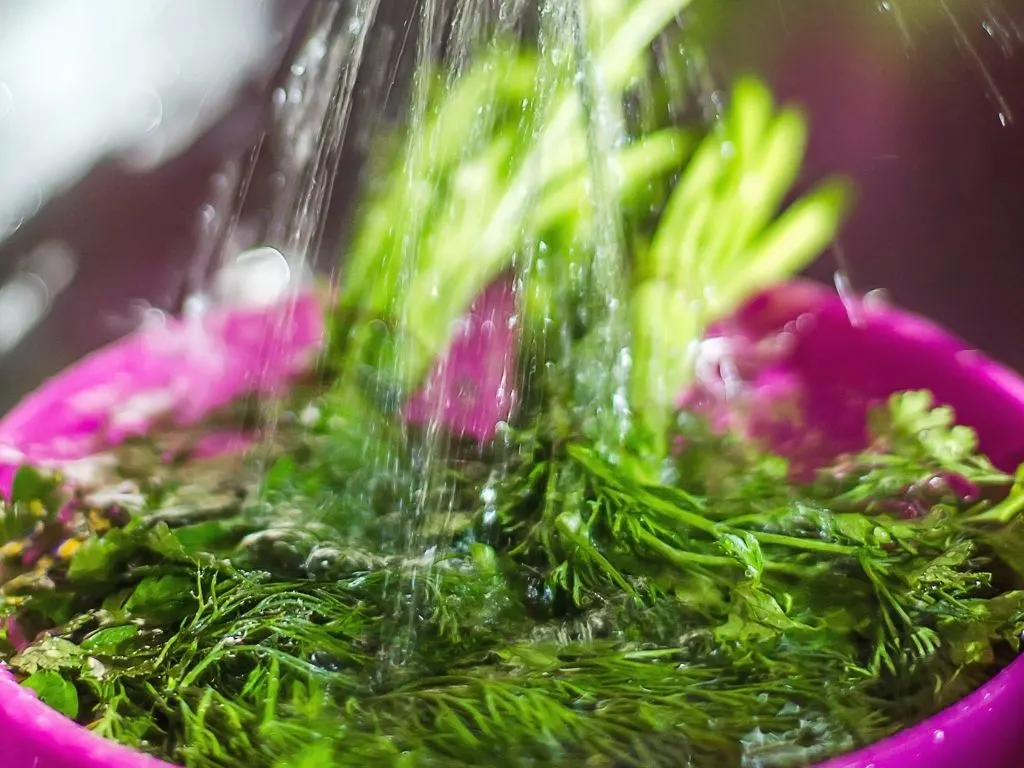
The general process for drying herbs is as follows;
- Once you’ve picked the fresh herbs from your herb garden, inspect them for any insects – give them a gentle wash under some cold water, shaking them dry, or carefully pat them dry on some paper towels.
- For herbs like basil and sage and others with large leaves, remove the herb leaves from the stems and stalks.
- For feathery herbs like dill and those with smaller leaves such as rosemary, leave them on the stalks until are they have been dried.
No matter which drying method you choose below, the essential aspect when drying herbs is that they are in a well-ventilated location with a dry heat rather than a humid heat. Keep them out of direct sunlight. There must be no moisture in the air.
How To Tell When Herbs Are Dry
Although a dried herb will look different in colour and shrivelled up to a smaller size, the best test to tell if the herbs have dried out entirely is to do a simple crumble test.
Try breaking a leaf between your fingers, and if it crumbles easily, the process is complete.
Popular Dried Herbs
- Basil
- Bay Leaves
- Lavender
- Mint
- Oregano
- Parsley
- Rosemary
- Sage
- Tarragon
- Thyme
Air Drying
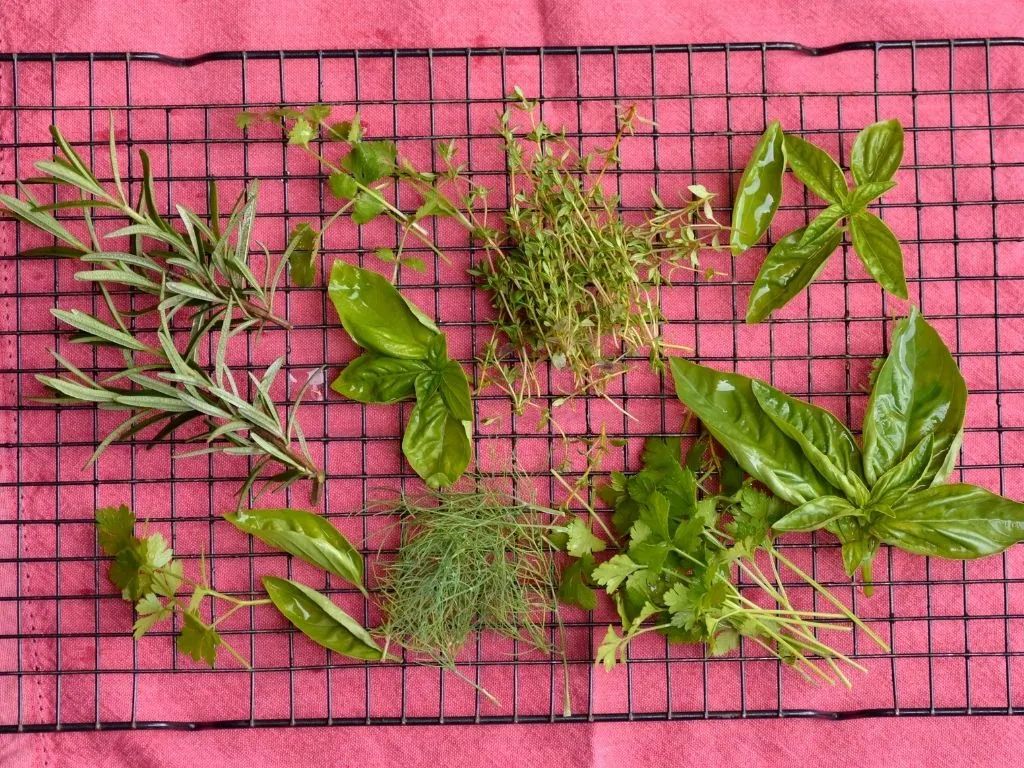
Air drying herbs is the cheapest and easiest option as it requires minimal equipment.
It’s a traditional method that dates back many years. Herbs can be tied together and hung upside down or arranged in a single layer on trays.
To air-dry herbs, the instructions are straightforward to follow:
- Arrange herbs on a baking tray, mesh rack or piece of cheesecloth, or tie the herbs up together in bunches with some string or preferably an elastic band. Ensure that air can circulate them as much as possible. If space allows, put them somewhere dark and dry, at room temperature. If you hang bundles of herbs up with an elastic band, this will help the bundle stay together as the herbs begin to dry out. As herbs dry, they will shrink.
- They should be dried out in about a week.
- Air drying herbs takes more days to dry than other methods, but it’s simple and requires no special equipment.
Sturdy herbs such as rosemary and thyme, which are kept on their stems, are best suited to hang in bundles upside down.
Microwave Drying
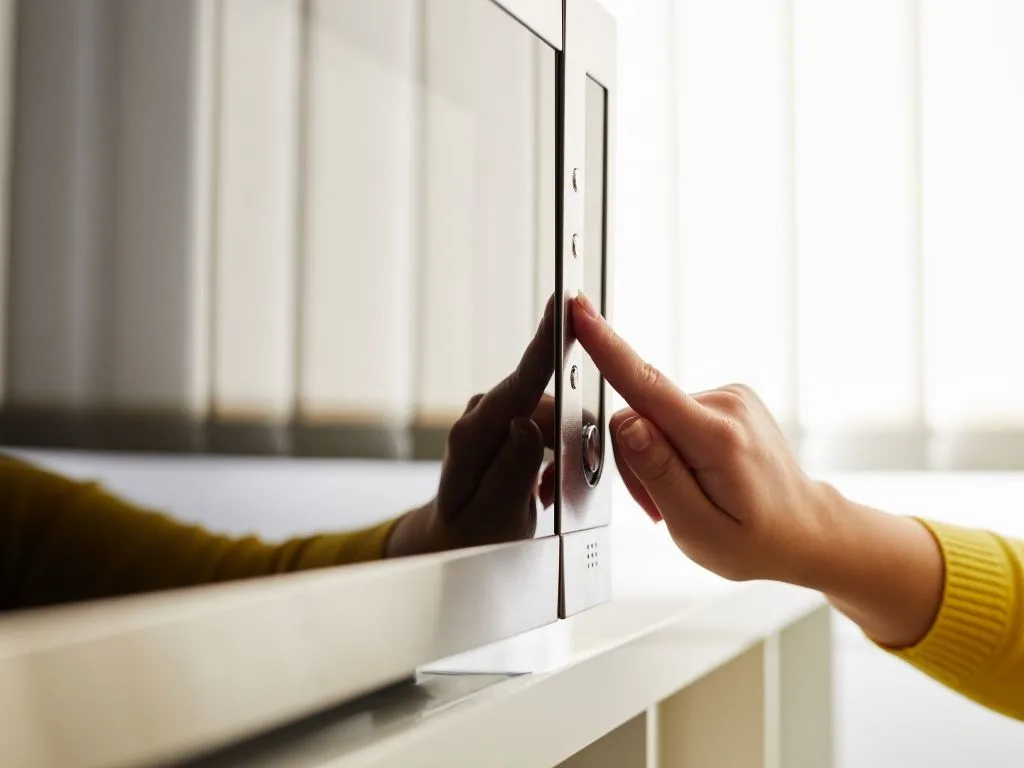
Using a microwave to dry herbs is the quickest option and is the best method if you need dried herbs for a recipe quickly.
- As with other methods, remove the leaves from the stems and rinse clean. Shake them dry, or use a paper towel to pat them dry gently.
- Place the separated herbs between two kitchen paper towels and microwave on high for one minute. Repeat in bursts of 30 seconds until the herbs are dried.
- Do the crumble test by breaking a leaf in your hand; if it crumbles easily, you have dried herbs ready for cooking!
Oven Drying

Using an oven is another quick method to create dried herbs. Although not as fast as a microwave, the process should only take 30 minutes.
- Switch the oven to its lowest setting.
- Wash and pat dry the herbs with a paper towel.
- Lay the separated leaves out on a baking tray – a silicon tray or mat works well to prevent the herbs from sticking during the cooking time.
- Cook the herbs in the oven for 30 minutes. Check they are ready by crumbling them between your fingers. They will break easily if they are ready. If they don’t, put them back in the oven for longer.
Dehydrator
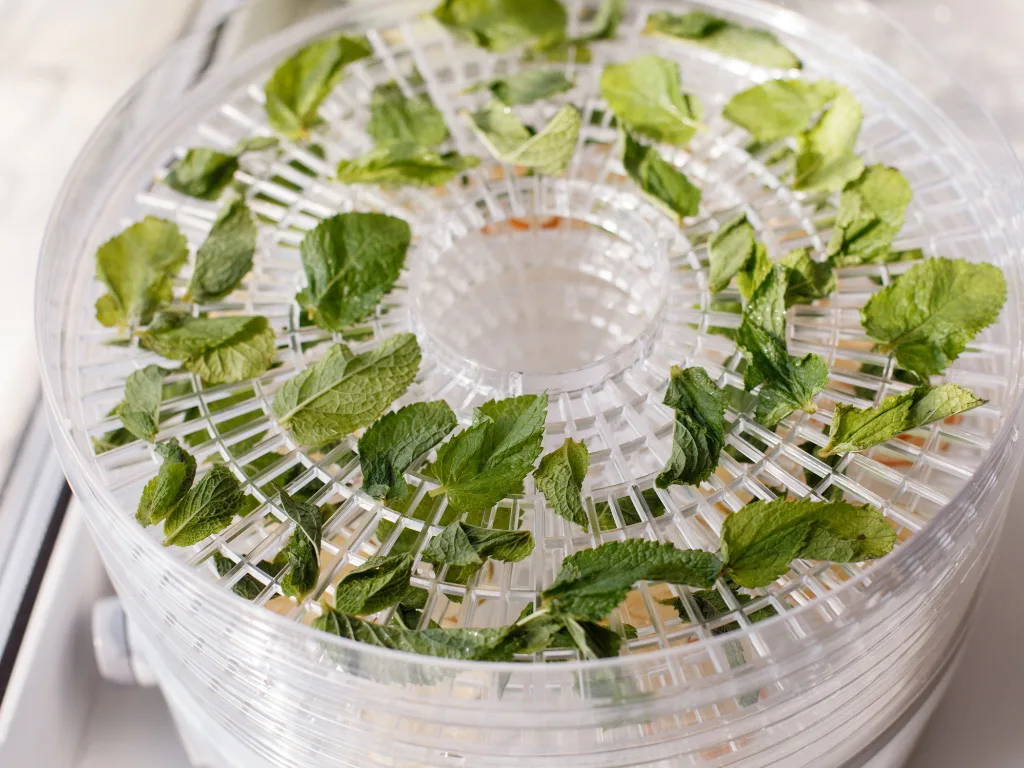
Using a food dehydrator to dry fresh herbs, especially less sturdy varieties such as basil which won’t hold up so well when tied and hung upside down.
- Wash the herbs and gently pat dry with some paper towels.
- Lay the leaves out on each tray.
- Set to the lowest setting and cook for about 2 hours. Check on them to see if they are ready – they should crumble when you try to break them. If they don’t, leave them to cook for another hour.
Related: What I think of the Ninja Foodi Max
Can You Use A Paper Bag To Dry Herbs?
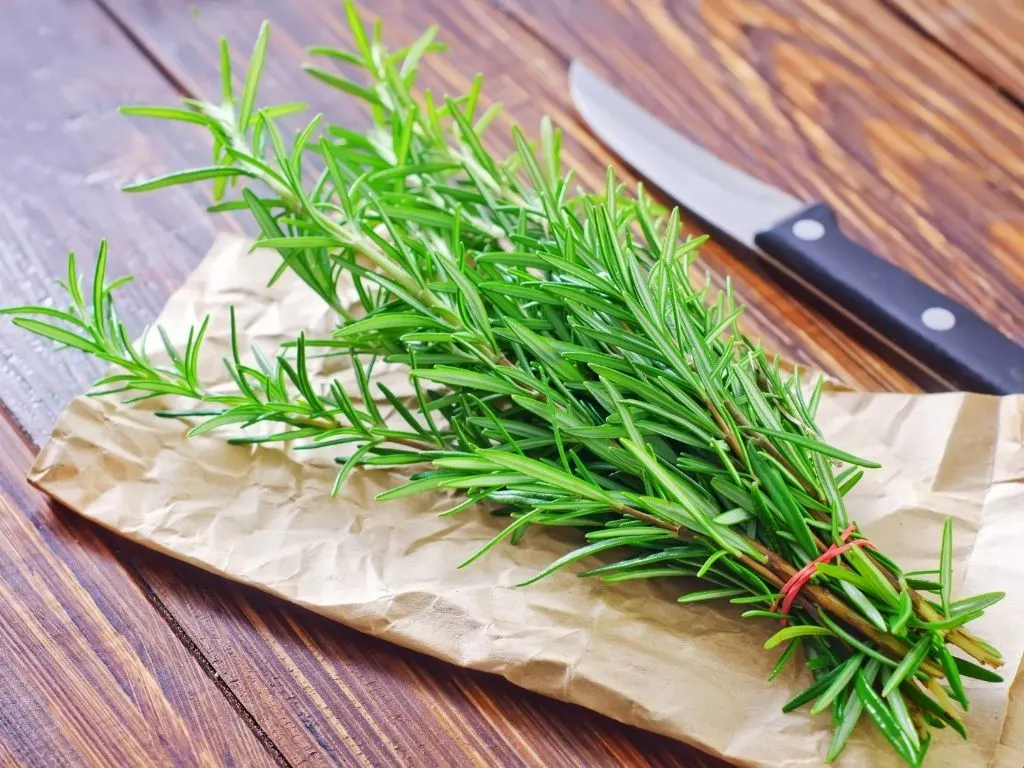
Yes, you can place herbs in a paper bag to dry. This method will help keep any dust away. Place the herbs in the paper bag, fold the opening closed and pierce a few holes in the bag. This will also help prevent too much light from reaching the herbs and keep the dried herb in the dark place.
Storing Home Dried Herbs
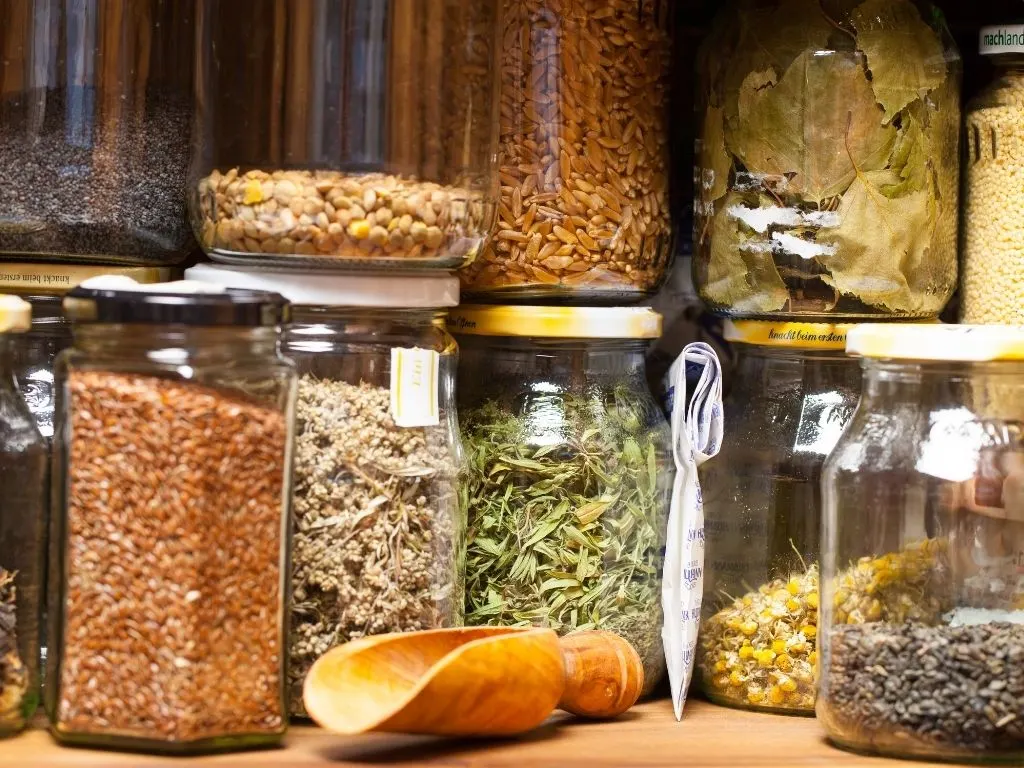
To preserve your dried herbs and retain their taste and flavour, it’s vital to store them correctly.
Store your dried herbs in glass jars or airtight containers and keep them out of direct sunlight, preferably in a dark place. Try to keep them at a stable, cool room temperature, so don’t keep them next to the oven or on top of a microwave. Also, keep them in a dry place, out of any areas that could get damp or attract any moisture.
Label each jar with the date and name of the herb.
How Long Do Dried Herbs Last?
If stored correctly, ground dried herbs will last for about two years. This is a similar shelf life to store-bought herbs.
Dried herbs stored whole, such as bay leaves, tend to last a bit longer than herbs that have been crushed and ground.
Which Method Is Best For Drying Herbs?
Now that you have read our guide on how to dry herbs, you will have a better idea of which method will suit you best. All options are easy, it really depends on the type of herb you are drying as well as which kitchen gadgets you have available.
The Benefits Of Drying Your Own Herbs
- Dried herbs last much longer than fresh (assuming they are stored in airtight containers).
- You will have access to year-round herbs to use in a variety of recipes.
- Save money by drying fresh herbs at home vs store-bought.
- Only harvest herbs as and when you need them.
Using Dried Herbs
- You can quickly sprinkle them in curries, soups and stews, or add a few varieties together to create your favourite spice mix.
- Making herbal tea.
- Using in potpourri.
- Adding to essential oils.
